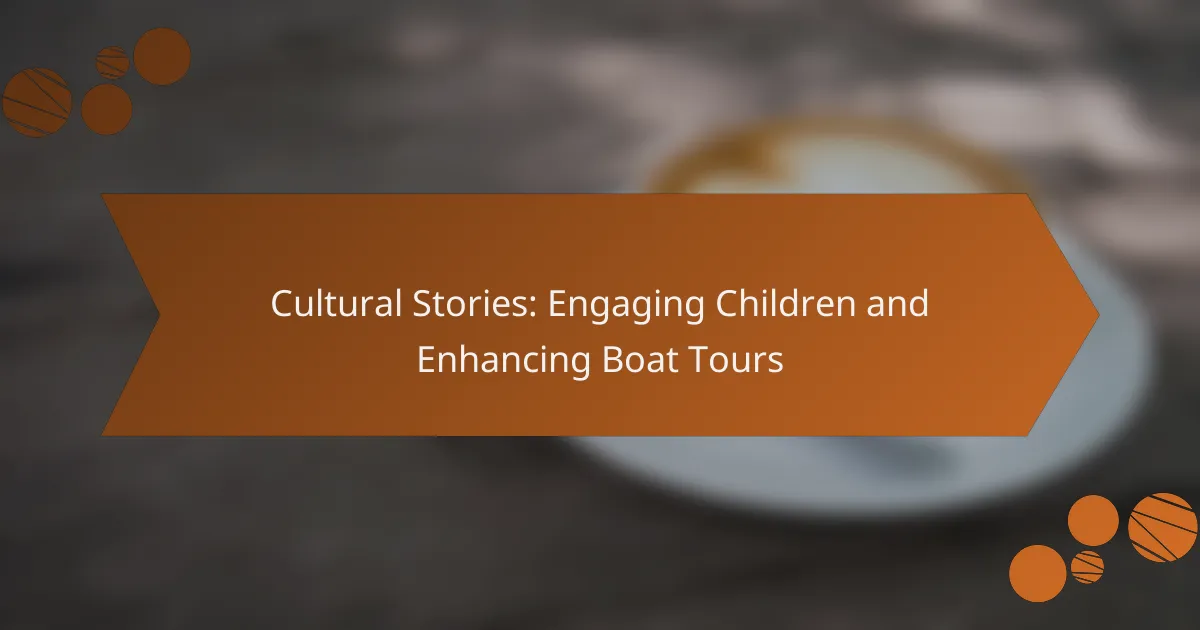Incorporating cultural stories into boat tours can transform the experience for children, making it both engaging and memorable. By weaving in fables, myths, and local history, these narratives not only captivate young audiences but also provide a deeper connection to the surrounding environment. Interactive storytelling and visual aids further enhance this experience, ensuring that children leave with lasting memories of their adventure.
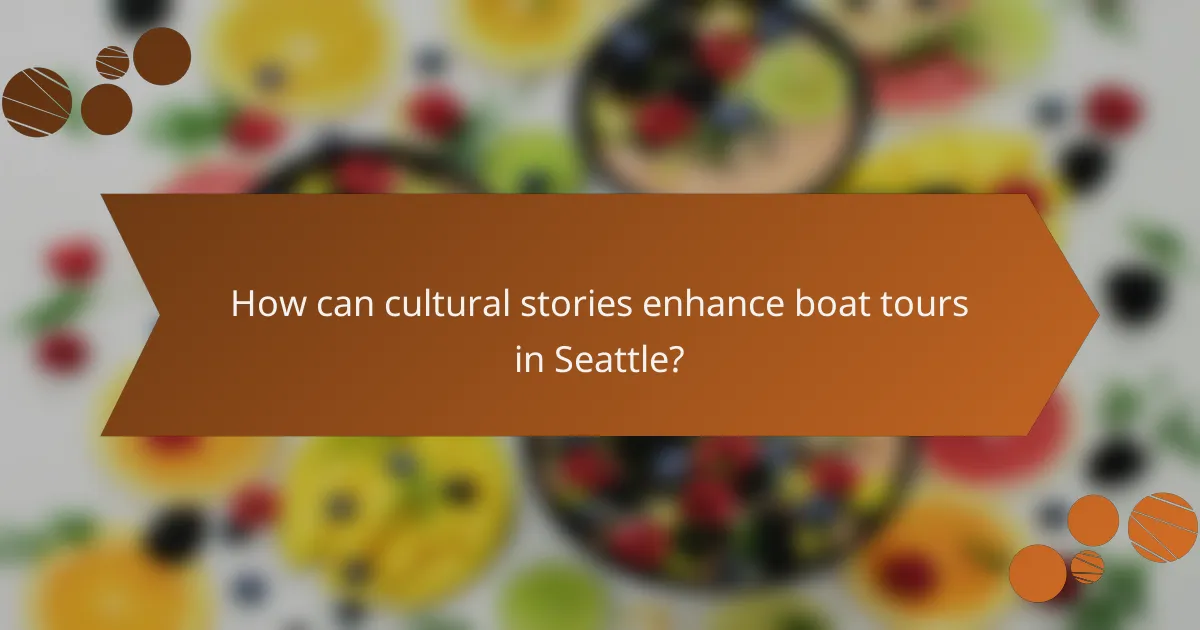
How can cultural stories enhance boat tours in Seattle?
Cultural stories can significantly enhance boat tours in Seattle by making the experience more engaging and memorable for participants, especially children. These narratives provide context and connection to the local environment, enriching the overall tour experience.
Engaging narratives improve children’s attention
Children often have shorter attention spans, making it crucial to capture their interest during boat tours. Incorporating engaging narratives can help maintain their focus and make the tour more enjoyable. For example, using storytelling techniques such as character-driven tales or interactive elements can keep kids actively involved.
Consider integrating questions or prompts that encourage children to participate in the storytelling. This could include asking them to guess what happens next or to share their own related experiences. Such involvement not only keeps their attention but also fosters a deeper connection to the stories being told.
Local folklore adds unique experiences
Local folklore can provide a distinctive layer to boat tours in Seattle, offering insights into the region’s history and culture. Stories about indigenous peoples, early settlers, or maritime legends can create a rich tapestry of experiences that resonate with both children and adults. For instance, sharing tales of the Duwamish tribe or the Great Seattle Fire can spark curiosity and discussion.
When selecting folklore to share, consider the age group of your audience and tailor the stories accordingly. Simple, relatable tales may work best for younger children, while older kids might appreciate more complex narratives. This approach not only entertains but also educates, making the boat tour a memorable learning experience.
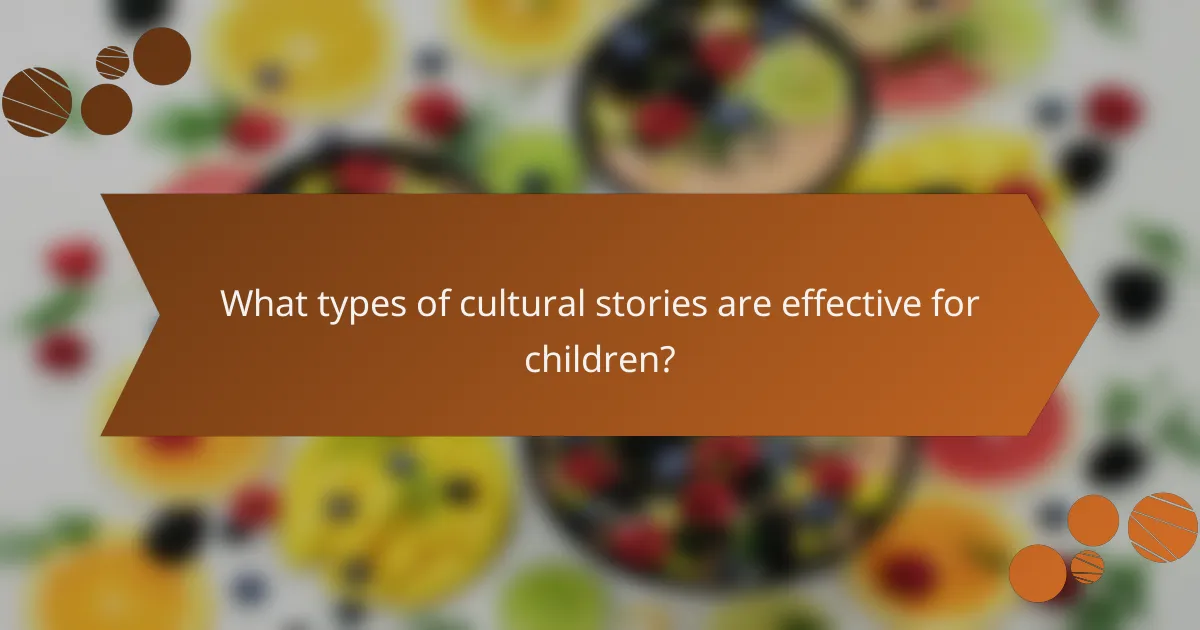
What types of cultural stories are effective for children?
Cultural stories that resonate with children often include engaging narratives that are relatable and imaginative. Fables, myths, and historical tales can captivate young audiences, making them effective tools for enhancing boat tours.
Fables and myths from Pacific Northwest
Fables and myths from the Pacific Northwest are rich in symbolism and often feature animals as central characters, teaching moral lessons. Stories such as “Raven Steals the Light” illustrate the importance of creativity and resourcefulness, which can engage children’s imaginations during boat tours.
When sharing these tales, consider incorporating interactive elements, such as asking children to act out parts of the story or to draw their favorite characters. This involvement can deepen their connection to the narrative and the natural surroundings.
Historical tales of Seattle’s maritime heritage
Seattle’s maritime heritage offers a wealth of historical tales that can intrigue children, such as the story of the Great Seattle Fire or the founding of the Seattle waterfront. These narratives provide context for the sights they see during boat tours, making the experience more meaningful.
To enhance engagement, use visual aids like maps or images of historical landmarks. You might also encourage children to ask questions about the stories, fostering a sense of curiosity and exploration about their local history.

How to integrate storytelling into boat tours?
Integrating storytelling into boat tours enhances the experience by engaging children and creating memorable moments. This can be achieved through interactive sessions and the use of visual aids that captivate young audiences.
Interactive storytelling sessions on board
Interactive storytelling sessions allow children to participate actively, making the experience more engaging. Consider involving them in the narrative by asking questions or encouraging them to contribute ideas related to the story.
To implement this, choose stories that relate to the local culture or environment. For instance, if the tour is near a historic site, narrate tales about its significance while inviting children to share what they think happened in the past.
Use of visual aids and props
Visual aids and props can significantly enhance storytelling during boat tours. Items like maps, pictures, or small artifacts can help illustrate the story and keep children interested. For example, using a treasure map can turn a simple narrative into an exciting adventure.
When selecting props, ensure they are safe and suitable for the environment. Consider using waterproof materials for items that may get wet. This approach not only makes the storytelling vivid but also encourages children to engage their imaginations and learn about their surroundings in a fun way.
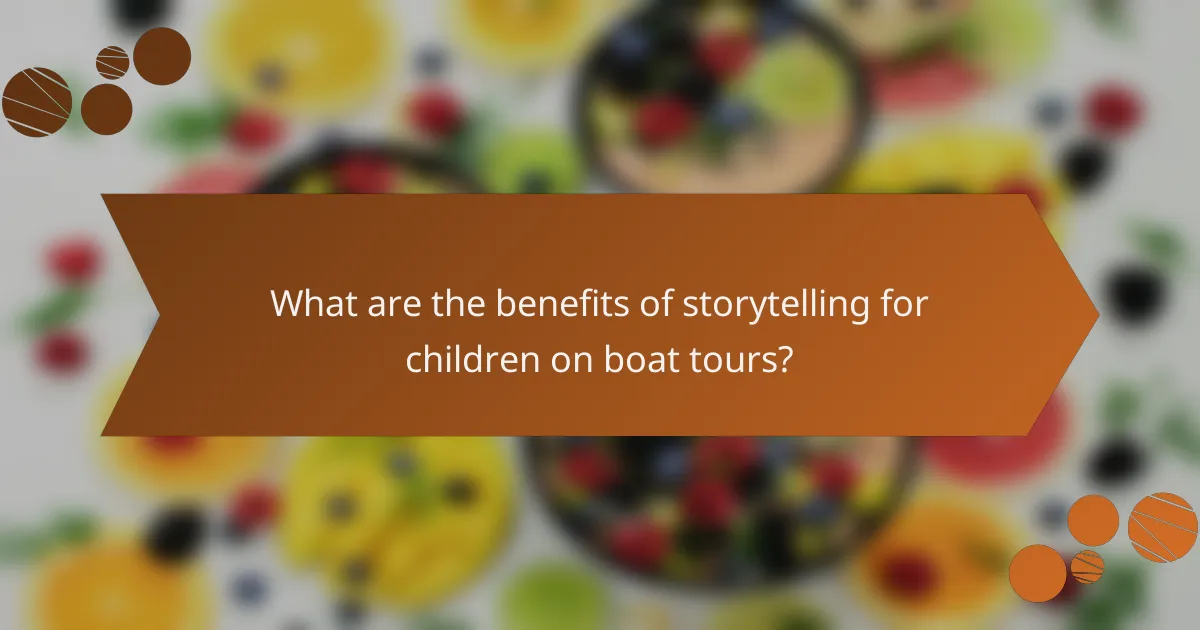
What are the benefits of storytelling for children on boat tours?
Storytelling during boat tours offers numerous benefits for children, enhancing their engagement and understanding of the environment around them. It fosters imagination and curiosity while making the experience more memorable and educational.
Enhances learning and retention
Storytelling enhances learning by providing context and emotional connections to the information being shared. Children are more likely to remember facts and details when they are woven into a narrative that captures their interest.
For example, a story about local wildlife can help children recall specific species and their habitats, making the educational aspect of the boat tour more impactful. Engaging narratives can also encourage children to ask questions, further deepening their understanding.
Promotes cultural awareness and appreciation
Storytelling can introduce children to the cultural history and traditions of the regions they are exploring. By sharing local legends or historical accounts, children gain insight into the significance of the area, fostering a sense of connection and respect for different cultures.
Incorporating stories from diverse backgrounds can help children appreciate the richness of cultural diversity. For instance, tales about indigenous communities can highlight their relationship with the land and water, encouraging children to value and protect these resources.

What are the prerequisites for implementing storytelling in boat tours?
Implementing storytelling in boat tours requires trained guides and a deep understanding of local cultural narratives. These elements enhance the experience for participants, making tours more engaging and memorable.
Training for tour guides in storytelling techniques
Tour guides should undergo specialized training in storytelling techniques to effectively engage audiences. This training can include workshops on voice modulation, pacing, and audience interaction to create a captivating narrative.
Guides should practice storytelling in various formats, such as personal anecdotes or historical accounts, to find their unique style. Role-playing exercises can also help them refine their delivery and adapt to different group dynamics.
Research on local cultural narratives
Understanding local cultural narratives is crucial for creating authentic storytelling experiences. Guides should research the history, folklore, and traditions of the area to weave these elements into their narratives.
Utilizing resources such as local libraries, cultural centers, and interviews with community elders can provide valuable insights. This research not only enriches the storytelling but also fosters a connection between the audience and the local culture.

How can boat tour companies measure the impact of storytelling?
Boat tour companies can measure the impact of storytelling by collecting customer feedback and analyzing engagement metrics during tours. These methods provide insights into how stories resonate with guests and enhance their overall experience.
Customer feedback and surveys
Collecting customer feedback through surveys is an effective way to gauge the impact of storytelling on boat tours. Companies can ask specific questions about the stories shared, their relevance, and how they affected the guests’ enjoyment. Consider using a mix of rating scales and open-ended questions to capture both quantitative and qualitative data.
For instance, a survey could ask guests to rate their experience on a scale from 1 to 10, followed by a prompt to describe their favorite story. This dual approach helps identify which narratives are most engaging and why.
Engagement metrics during tours
Monitoring engagement metrics during tours can provide real-time insights into how storytelling influences guest interactions. Companies can track attention levels by observing guest reactions, such as laughter, questions, or participation in discussions. This qualitative data can be complemented by quantitative metrics, such as the duration of guests’ attention on specific stories.
Additionally, using technology like mobile apps to gather data on guest interactions can enhance understanding. For example, tracking how often guests use features related to storytelling, such as accessing story maps or multimedia content, can reveal which elements are most captivating.
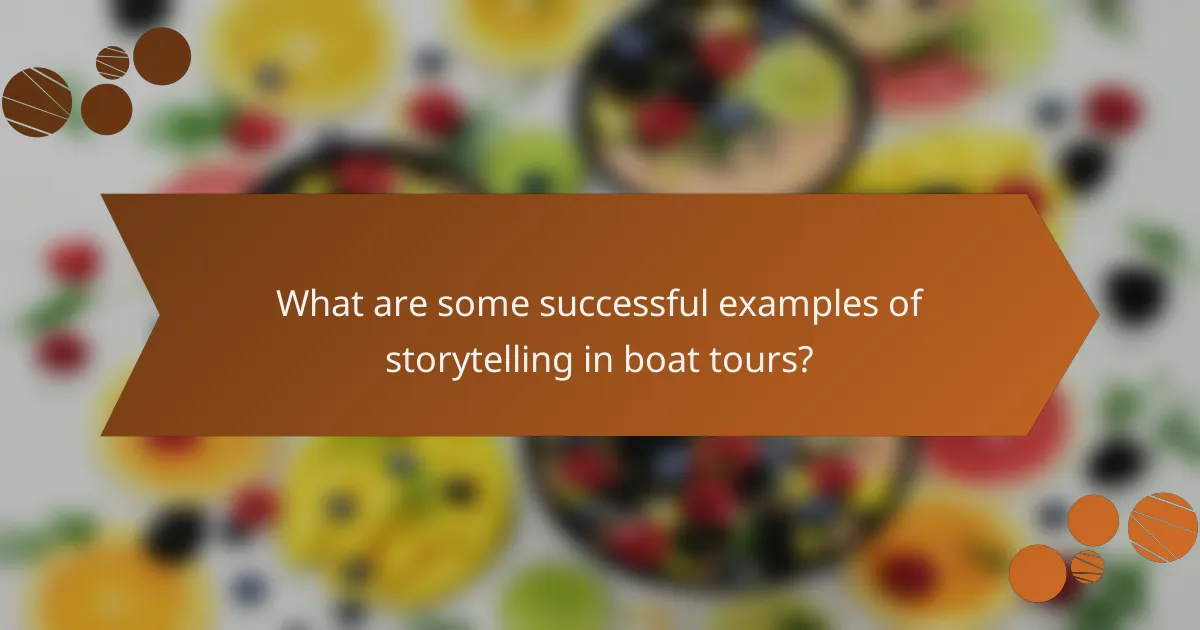
What are some successful examples of storytelling in boat tours?
Successful storytelling in boat tours enhances the experience by engaging participants through narratives that connect them to the surroundings. Examples include themed tours that incorporate local history, folklore, or environmental education, making the journey memorable and informative.
Argosy Cruises’ themed tours
Argosy Cruises offers themed tours that blend local history with captivating storytelling. For instance, their “Seattle Locks Cruise” narrates the engineering marvel of the Hiram M. Chittenden Locks while showcasing the natural beauty of the area. This approach not only entertains but also educates passengers about the region’s significance.
These themed tours often feature knowledgeable guides who share anecdotes and historical facts, creating an immersive experience. By incorporating local legends or cultural stories, Argosy Cruises effectively enhances the connection between the audience and the environment they are exploring.
To maximize engagement, consider incorporating interactive elements such as audience participation or multimedia presentations. This can help maintain attention and deepen the understanding of the stories being told during the cruise.
